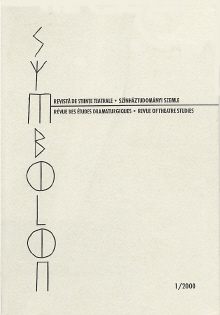Az internet nyelve - szóbeliség és írásbeliség a hálón és a hétköznapokban
The Language of the Internet - Oral and Written Communication on the Web and in Everyday Life
Author(s): Kinga Bakk MiklósiSubject(s): Cultural Essay, Political Essay, Societal Essay
Published by: UArtPress - Editura Universității de Arte din Tîrgu Mureş - A Marosvásárhelyi Művészeti Egyetem Kiadója
Keywords: e-mail-, chat-, web language; digital environment; digital communication; digilect; adolescent`s linguistic expressions
Summary/Abstract: The Language of the Internet – Oral and Written Communication on the Web and in Everyday Life In network communication over the Internet there is a mingling between the features of the spoken and the written language. Kristóf Nyiri in his study: Hagyomány és társadalmi kommunikáció (Tradition and social communication) draws attention to the basic form of networking, that is e-mail (electronic mail), and his observation on the similarities between the style of emails and of the spoken language is fascinating. The text of e-mails is full with incorrectly staring sentences and incoherent sentence structures. The speed of the net, the pressure of the situation in which the communication is taking place puts the reflective, eloquent formulations in the background (Birch 1998). What Nyiri writes about the e-mail phenomenon, is valid for the chat, too. In both cases – as in speech – spontaneity, the context of the situation becomes more important than what is specific to writing (especially in printed books): a single, historical and logical coherence. The spontaneity and the mystique of participation are amplified, and these create a communicational situation, which is particularly favorable for the development of language tricks and games. Since every mistake committed in writing can be corrected with a single movement, this encourages people in writing e-mails or chatting, to be more spontaneous and creative in using the language. Using the net-language on the web and in real life is optional – however, its knowledge for the communication on the Internet is essential. The aim of this presentation is therefore to shed light on the relationship between Internet language and oral and written language, and not just to present the possible assumed stereotypes or just to present ethnically limited data, but also to present regional Transylvanian particularities.
Journal: SYMBOLON
- Issue Year: XV/2014
- Issue No: 26
- Page Range: 48-57
- Page Count: 9
- Language: Hungarian

